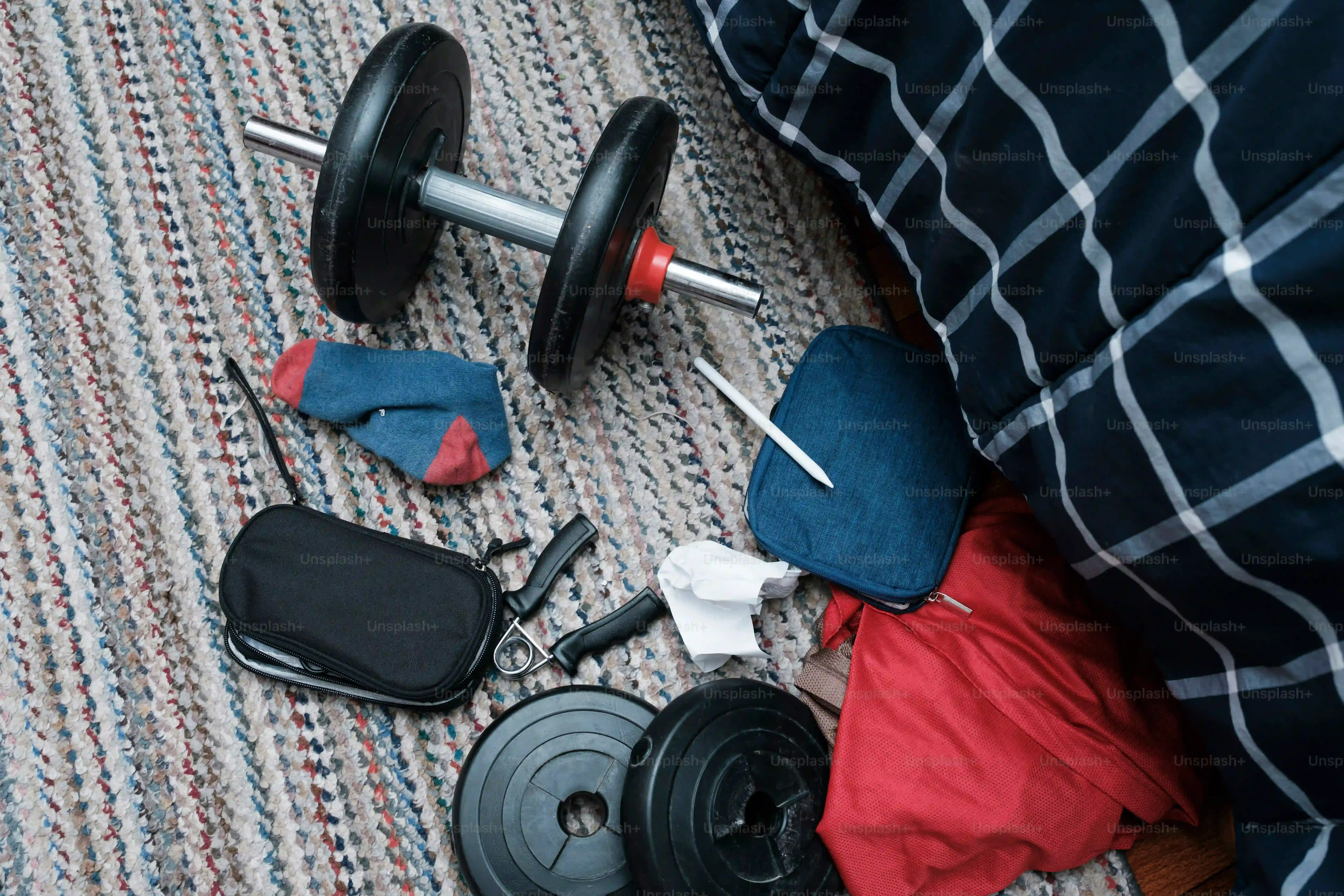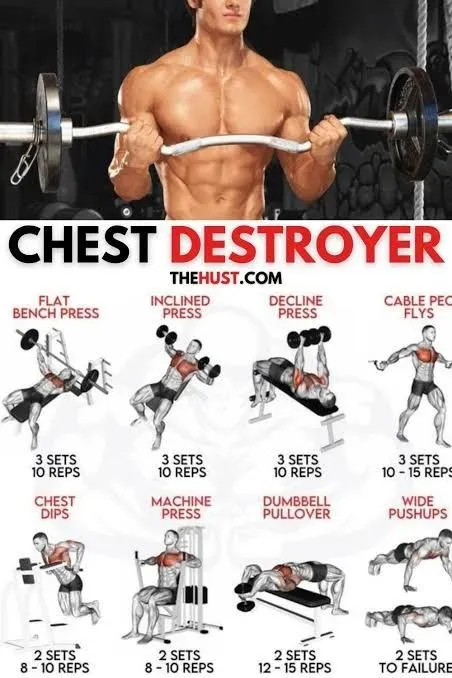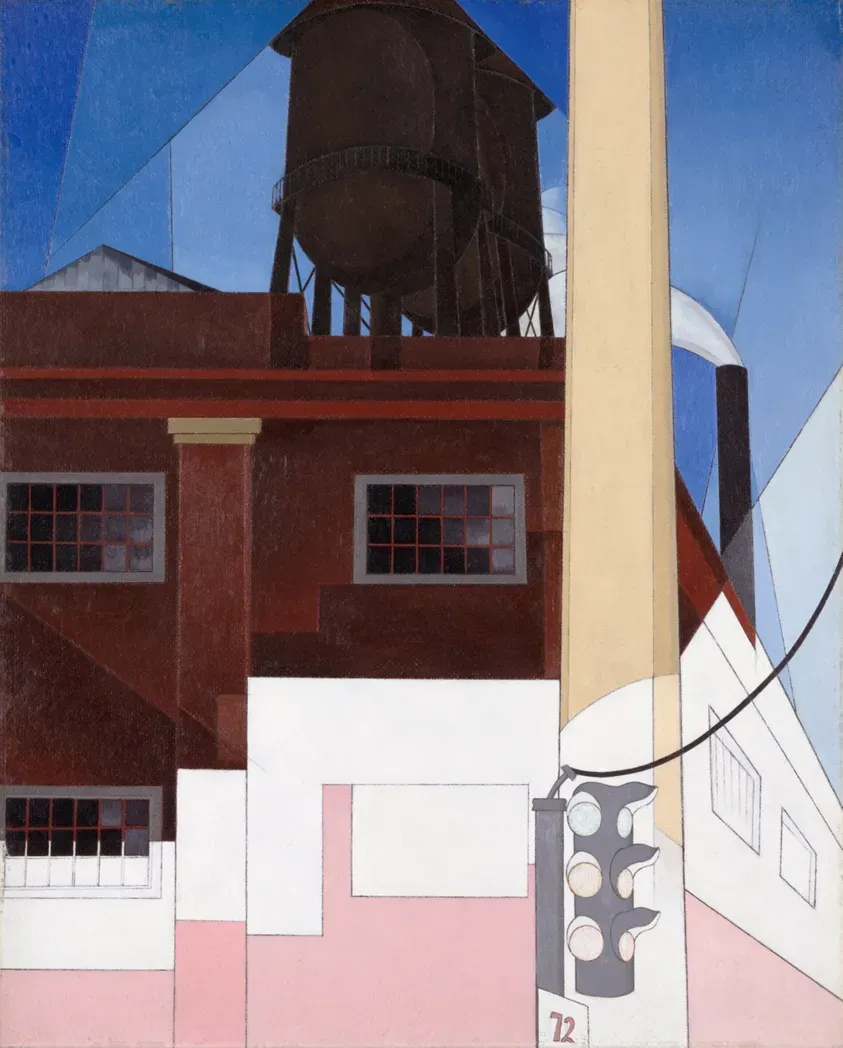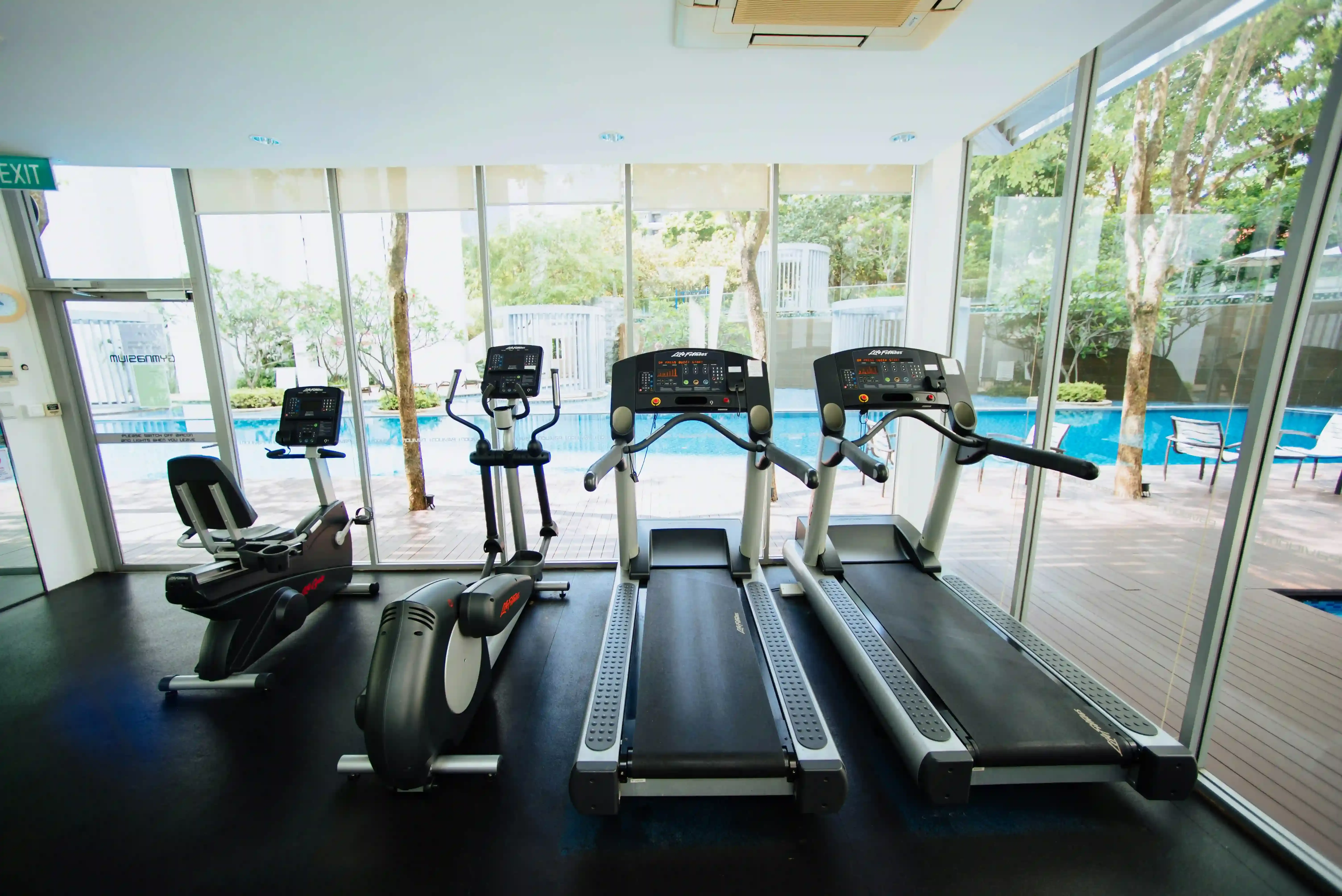Table of Contents
Tired of flimsy resistance bands that feel like rubber chickens? Maybe you're done with push-ups being your only chest option. Building a strong, defined chest at home can feel like a pipe dream without the right gear. You see gym bros bench pressing mountains, and here you are, staring at your living room carpet, wondering how to get anything close to that pump. But here's the reality: you don't need a full commercial gym setup to make serious chest gains from your own place. With a smart approach and the right pieces, a killer chest workout at home with equipment is absolutely within reach.
Why Bother with a Chest Workout at Home with Equipment?

Why Bother with a Chest Workout at Home with Equipment?
Beyond the Basic Push-Up: Real Growth
Look, we've all been there. You start with push-ups. You do fifty, a hundred, maybe two hundred a day. You get pretty good at them, sure. Your endurance might improve, but are you seeing real chest *size* and *strength* gains? Often, the answer is a frustrating "not much." Your body adapts quickly to bodyweight alone. To seriously challenge your chest muscles and force them to grow, you need progressive overload – lifting heavier things or adding resistance. That's where a chest workout at home with equipment becomes essential. It lets you add weight, change angles, and hit the muscle fibers in ways a simple push-up can't, breaking through those plateaus and building actual muscle mass.
Convenience Meets Capability: No Excuses
Dragging yourself to the gym isn't always feasible. Life happens – work, family, traffic. Maybe your gym smells like old socks and regret. Setting up a dedicated space for your chest workout at home with equipment eliminates those excuses. You can train when you want, how you want, without waiting for machines or wiping down someone else's sweat. It saves time and gas money. Plus, once you've made the initial investment in some versatile pieces, it's significantly cheaper in the long run than monthly gym fees that you might not even use consistently.
Why Home Equipment Wins:
- Allows for progressive overload beyond bodyweight.
- Saves time and eliminates travel.
- Provides privacy and comfort.
- More cost-effective over time than gym memberships.
- Lets you train on your schedule.
MustHave Equipment for Your Home Chest Gains

MustHave Equipment for Your Home Chest Gains
Dumbbells: Your Versatile Powerhouses
Let's be blunt: if you're serious about a chest workout at home with equipment, dumbbells are non-negotiable. Forget those flimsy little pink ones; you need something with real weight, ideally adjustable ones or a set that covers a decent range. Dumbbells allow for a full range of motion that fixed barbells can't match. You can perform presses, flyes, pullovers, and hit your chest from different angles. They force each side of your body to work independently, which helps iron out imbalances. It's like having a mini-gym in your hands, capable of targeting every muscle fiber in your pectorals.
An Adjustable Bench: More Angles, More Gains
Pairing those dumbbells with an adjustable weight bench is the next logical step. Why? Because your chest isn't just one flat muscle. It has upper, middle, and lower fibers. Hitting all of them effectively requires changing the angle. An adjustable bench lets you do incline presses to target the upper chest, flat presses for the middle, and decline variations (if your bench allows) for the lower chest. Trying to replicate these angles with yoga blocks and stacks of books is a fast track to frustration or, worse, injury. A solid bench provides stability and unlocks a whole new dimension for your chest workout at home with equipment.
Essential Home Chest Equipment:
- Adjustable Dumbbells (or a set with varied weights)
- Adjustable Weight Bench
- Resistance Bands (for warm-ups, finishers, or assisted movements)
- Optional: Push-up Handles (for deeper range of motion)
- Optional: Dip Station (for advanced bodyweight or weighted dips)
Structuring Your Effective Chest Workout at Home with Equipment

Structuring Your Effective Chest Workout at Home with Equipment
Start Strong: Warm-Up and Activation
Jumping straight into heavy presses with cold muscles is asking for trouble. Think of your warm-up as prepping the engine. It's not just about avoiding injury, though that's crucial. It's also about activating the target muscles so they're ready to fire efficiently. A good warm-up for your chest workout at home with equipment involves some light cardio to get blood flowing (like jogging in place or jumping jacks) and dynamic stretches for the shoulders, chest, and upper back. Follow that with some chest-specific activation exercises. Light resistance band pull-aparts or a few sets of easy push-ups can wake up those chest fibers before you load them.
Exercise Selection and Order: Hit All the Angles
Once you're warm, it's time for the main event. Don't just do three sets of dumbbell presses and call it a day. An effective chest workout at home with equipment targets the muscle from different angles. Start with your heaviest compound movement – usually dumbbell presses (flat or incline depending on your focus for the day). This allows you to move the most weight when you're freshest. Follow up with an isolation exercise like dumbbell flyes to stretch the muscle fibers at the bottom and squeeze hard at the top. Consider a decline variation if your bench allows, or maybe some weighted push-ups if you have a plate to put on your back or resistance bands to add tension. The order matters; prioritize the exercises that allow you to lift the most weight safely.
Sample Home Chest Workout Structure:
- Warm-up: 5-10 minutes light cardio & dynamic stretches
- Activation: Resistance band pull-aparts (2 sets of 15-20 reps)
- Compound Movement: Dumbbell Incline Press (3-4 sets)
- Compound Movement: Dumbbell Flat Press (3-4 sets)
- Isolation Movement: Dumbbell Flyes (3 sets)
- Finisher (Optional): Weighted Push-ups or Banded Push-ups (2-3 sets to failure)
Sets, Reps, and Rest: The Devil's in the Details
How many times should you lift the weight? How long should you stare at the wall between sets? For muscle growth (hypertrophy), the sweet spot is generally 3-4 sets per exercise, aiming for 8-12 repetitions per set where you feel a significant challenge by the last couple of reps. If you can easily do 15 reps, the weight is too light. If you can only manage 4, it's too heavy. Rest periods between sets should be long enough to recover but not so long you cool down completely – typically 60-90 seconds for compound movements, maybe slightly less for isolation exercises. Consistency in hitting these targets is key to seeing results from your chest workout at home with equipment.
Proven Exercises for Your Chest Workout at Home with Equipment
Dumbbell Presses: The Foundation of Your Home Chest Workout
Alright, let's get down to brass tacks. If you've got those dumbbells and that adjustable bench, dumbbell presses are your bread and butter for a solid chest workout at home with equipment. Think of them as the home version of the bench press, but arguably better because they allow for a more natural range of motion and hit stabilizer muscles harder. You can do them flat to blast the mid-chest, incline to build that upper chest shelf (which makes your chest look fuller, let's be honest), or even decline if your bench supports it for lower chest emphasis. Focus on controlled negatives (lowering the weight slowly) and a powerful squeeze at the top. Don't just drop the weight; own every inch of the movement.
Dumbbell Flyes: Stretching for Growth
Once you've hammered your chest with presses, it's time to isolate. Dumbbell flyes are fantastic for stretching the pectoral fibers at the bottom of the movement and getting a peak contraction at the top. They complement presses perfectly. Lie back on your bench (flat or incline works), hold the dumbbells with a slight bend in your elbows, and open your arms out to the sides like you're hugging a giant, invisible tree. Bring the weights back up in an arc, squeezing your chest muscles together at the top. Avoid going too heavy here; it's about the stretch and contraction, not moving maximum weight. Doing these after your presses will really light up your chest during your chest workout at home with equipment.
Key Differences: Press vs. Flye
- **Dumbbell Press:** Primarily a compound movement involving chest, shoulders, and triceps. Focus on pushing the weight.
- **Dumbbell Flye:** Primarily an isolation movement targeting the chest. Focus on squeezing the chest together.
- **Weight:** You'll typically lift much heavier on presses than on flyes.
- **Range of Motion:** Flyes involve a wider, arcing motion; presses are more linear.
Dumbbell Pullovers: An Old-School Chest Builder
Here's one that often gets overlooked but can add some serious mass and stretch to your chest, especially the upper and outer pecs. The dumbbell pullover. Lie across your bench (perpendicular to it, with your upper back on the bench, feet flat on the floor) or lie flat. Hold one dumbbell vertically with both hands cupped under the top weight. Start with the weight over your chest, arms slightly bent. Lower the weight slowly in an arc over your head, feeling the stretch in your chest and lats. Pull the weight back up using your chest and lats until it's over your chest again. It feels a bit awkward at first, but stick with it. It’s a surprisingly effective move for adding thickness and hitting those often-neglected areas during your chest workout at home with equipment.
Taking Your Home Chest Workout to the Next Level

Taking Your Home Chest Workout to the Next Level
Adding Intensity and Resistance
So, you've been hitting your dumbbell presses and flyes, feeling stronger, maybe even seeing some new definition. That's great! But eventually, just doing more reps or sets with the same weight stops being effective. Your body is smart, and it gets used to the stimulus. To keep making progress with your chest workout at home with equipment, you have to dial up the intensity. This doesn't always mean just grabbing heavier dumbbells, though that's part of it. It can involve using techniques like pause reps (holding the weight at the bottom of a press for a second), tempo training (slowing down the lowering or lifting phase), or incorporating resistance bands alongside your dumbbells for added tension at the top of the movement. Think about forcing the muscle to work harder in new ways.
You could also try drop sets – hitting a weight until you can't do any more reps, immediately dropping to a lighter weight, and going again until failure. Or maybe supersets, pairing a press with a flye with minimal rest in between to absolutely torch the muscle fibers. These techniques push you beyond your comfort zone and signal to your body that it needs to adapt and grow stronger to handle the new demands. Don't get stuck in a rut; experiment with these methods to shock your chest into continued growth.
Consistency, Recovery, and Smart Progression
Hitting your chest hard with a solid chest workout at home with equipment is only half the battle. The real magic happens outside of your workout time. Consistency is non-negotiable. You won't build a chest by training it intensely once a month. Aim for 1-2 dedicated chest sessions per week, allowing adequate rest in between. Muscles don't grow when you're lifting; they grow when you're recovering. This means getting enough sleep (aim for 7-9 hours) and fueling your body with protein and nutrients. Skipping sleep and eating junk food is like trying to build a house without bricks or mortar.
Finally, track your progress. Write down the exercises you do, the weight you lift, and the reps you complete. This isn't just busywork; it's your roadmap. When you come back for your next chest session, you know exactly what you need to beat. Did you get 10 reps last time? Try for 11, or use a slightly heavier weight for 8. This systematic approach to progressive overload, combined with consistent training and proper recovery, is how you'll continue to see results from your chest workout at home with equipment over the long haul. It's not glamorous, but it works.
Need a quick checklist for leveling up?
- Track your workouts religiously.
- Prioritize sleep – it's when muscles repair and grow.
- Eat enough protein to support muscle synthesis.
- Experiment with intensity techniques like pause reps or drop sets.
- Consider adding resistance bands for variable tension.
- Don't be afraid to invest in heavier dumbbells as you get stronger.
Making Home Chest Gains Stick
So, you've seen that building a solid chest from your living room isn't just about dropping to the floor for another set of push-ups. It requires some thought, a few key pieces of equipment, and consistent effort. The goal isn't to replicate the exact atmosphere of a crowded gym, but to leverage the convenience of home to build strength and size effectively. Don't get bogged down in needing every single piece of gear invented. Start with the basics, focus on form, and progressively challenge yourself. A decent chest workout at home with equipment is achievable, provided you put in the work and make smart choices about your tools and your routine. The results won't appear overnight, but they will appear if you show up.
